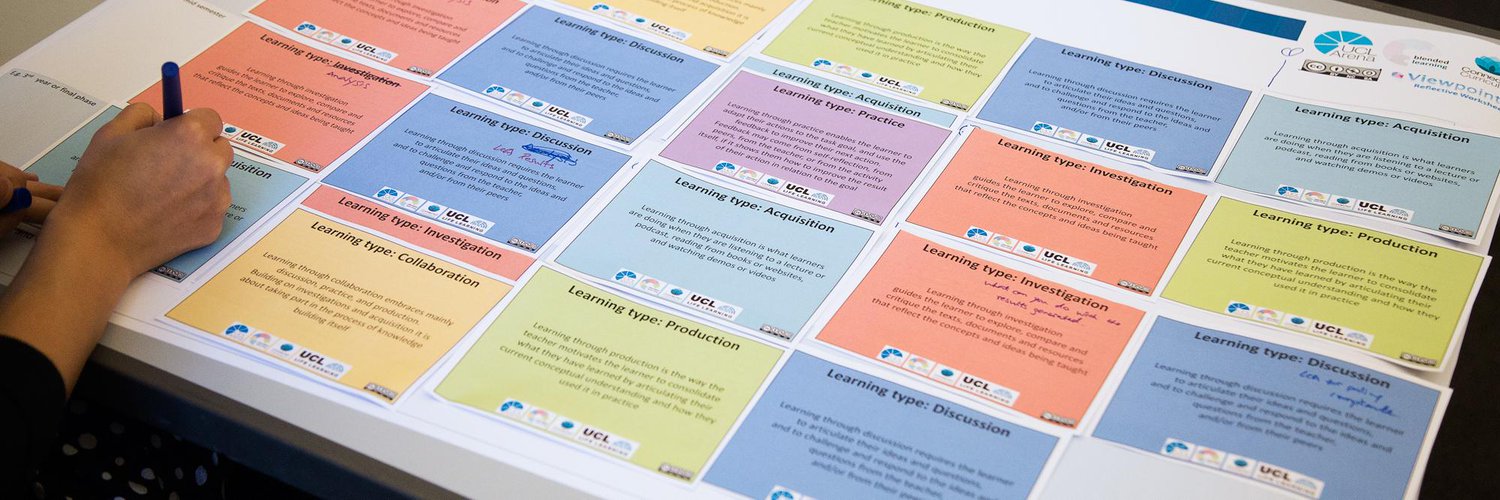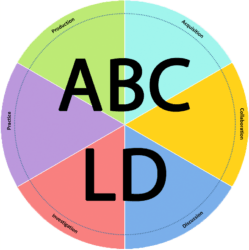Part 1 Introducing ABC Learning Design
Part 1. Introducing ABC Learning Design (PDF 8 pages)
Overview
How can we engage and enable our time-pressured academics to design rich blended and online courses? Even before the Covid epidemic of early 2020, most leading universities already had ambitious strategies to develop digitally rich blended and fully online courses. Progress was patchy in most institutions, as only a few pioneering academics had the design skills, technology knowledge and above all time to remodel their programmes. Covid was, on top of everything else, a challenge to current learning designs and has forced even traditionally-minded universities to ‘pivot’ rapidly to online learning provision, a cultural transformation that is unlikely to be completely reversed. Many universities with experience of ABC LD are now looking to integrate the method into their response.
The ‘Base’ version of ABC LD is a high-energy hands-on workshop. In just 90 minutes teaching teams work together to create a visual ‘storyboard’. The storyboard is made up of pre-printed cards representing the type and sequence of learning activities (both online and offline) required to meet the module or programme learning outcomes. Assessment methods, cross-programme themes and institutional policies can all be integrated into the process. The key to this approach is pace, engagement and collaboration. The ABC LD method was found particularly useful for new programmes or those changing to an online or more blended format. The approach generates high levels of engagement, creative informed dialogue and group reflection about curriculum design among even time-poor academics. The workshops have an immediate impact in terms of stimulating a level of collaborative ‘educational design thinking’ in a range of academic contexts. An early form of the Toolkit was released in 2018.
G1 discusses the underlying pedagogy of ABC LD, namely Professor Diana Laurillard’s concept of ‘learning types’, itself derived from her ‘Conversational Framework’ model of adult learning (Laurillard 2002). This has proved a remarkably robust and accessible route into teaching and learning discussion and reflection. The six learning types are: Acquisition (i.e.to read/watch/listen), Investigation, Practice, Discussion, Collaboration and Production. For teachers with limited experience of (and sometimes enthusiasm for) educational theory, the learning types approach is easy to grasp, resonates with practice, and stimulates rich pedagogical conversation. The six learning types were converted into the ABC LD cards, (below) used to create the storyboard.
Links
ABC LD (2020). ABC LD Toolkit, [https://abc-ld.org/]
Erasmus + ABC to VLE (2018). Erasmus+ Project site [https://abc-ld.org/abc-to-vle/]
Laurillard, D. (2002). Rethinking University Teaching: A Conversational Framework for the Effective Use of Learning Technologies. 2nd edition. London: RoutledgeFalmer.
Laurillard, D . (2012) Teaching as a design science: Building pedagogical patterns for learning and technology. London: Routledge.
Young, C. and Perovic, N. (2016) Rapid and Creative Course Design: As Easy as ABC? Procedia – Social and Behavioral Sciences, no. 228, pp. 390-395.



